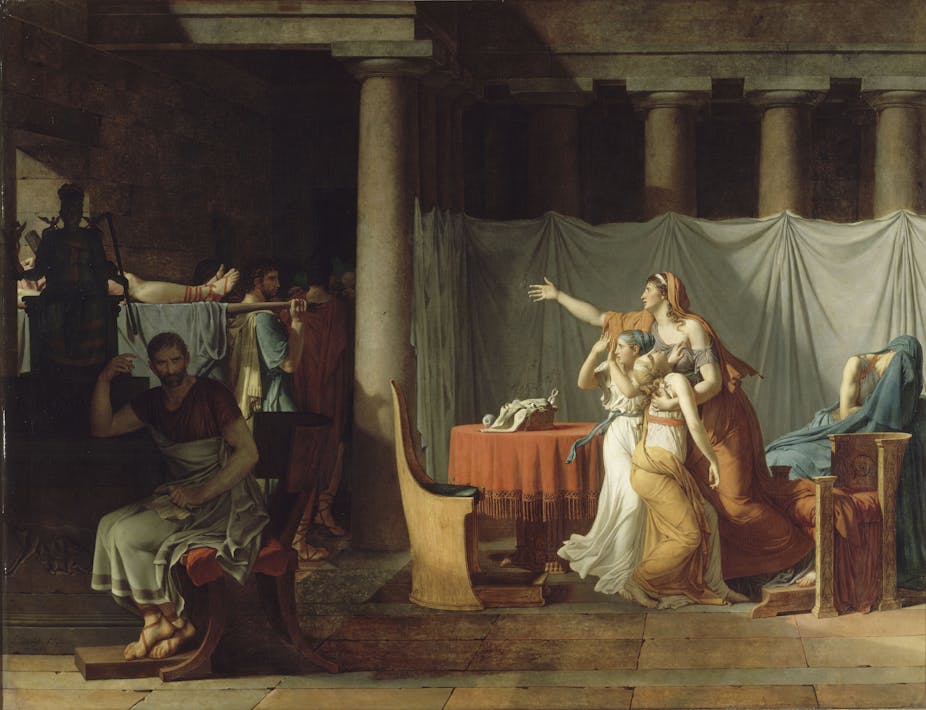From The Conversation:
Jacques-Louis David (1748-1825) was a leader among the painters of a generation enthused by the revival of interest in ancient histories, cultures and art we now call neo-classicism. After a rocky start, and a life-changing stay in Rome, David made his reputation with spectacular paintings derived from ancient history, shown at the Salon – the enormously popular public exhibitions of contemporary art held every two years in the Louvre palace. These works included the Oath of the Horatii, which caused a sensation in 1785 and the equally remarkable Death of Socrates. He painted The Lictors Bringing to Brutus the Bodies of his Dead Sons over the course of two years, before it premiered at the Salon in 1789. It was first seen six weeks after the storming of the Bastille. The exhibition closed on October 6, the same day a revolutionary crowd spearheaded by Parisian women extracted Louis XVI and his family from the Versailles and placed them under house arrest in the Tuileries palace.Share
The Brutus depicts a terrible moment in the life of the (perhaps legendary) founder of the Roman republic Lucius Junius Brutus who, after the brutalisation of his own family and the rape of Lucretia, led the successful revolt that ended the reign of Tarquinius Superbus and founded the Roman republic. After this coup, the exiled Tarquins attempted a counter-revolution. Brutus’s sons and his wife’s brothers were involved in this plot. Uncovering their treason, Brutus was forced to follow his own anti-treason decree and presided over the judgement and execution of his sons. David chose not to show the execution itself, described in Livy and Plutarch. Instead he imagined the moment when the lictors – the physical executioners and the bodyguards of the Republic – return the bodies to Brutus’ household for burial. At the left of the 14-square-metre canvas, we see the tense, numb Brutus seated, uncomfortably, in the shadow of the Goddess Roma. His facial expression is inscrutable, but his clenched feet, toes and right hand, clutching his anti-treason decree, betray his tension and pain. The corpses and the weight of history, office and the law seem to impose on him a heavy bodily and psychic burden. (Read more.)



















No comments:
Post a Comment